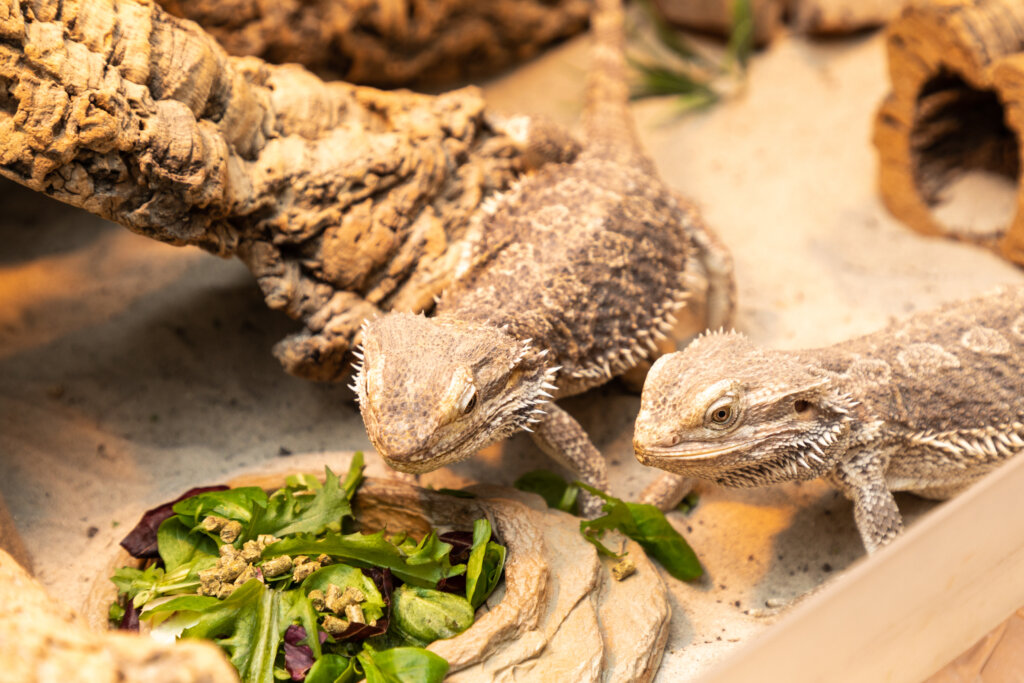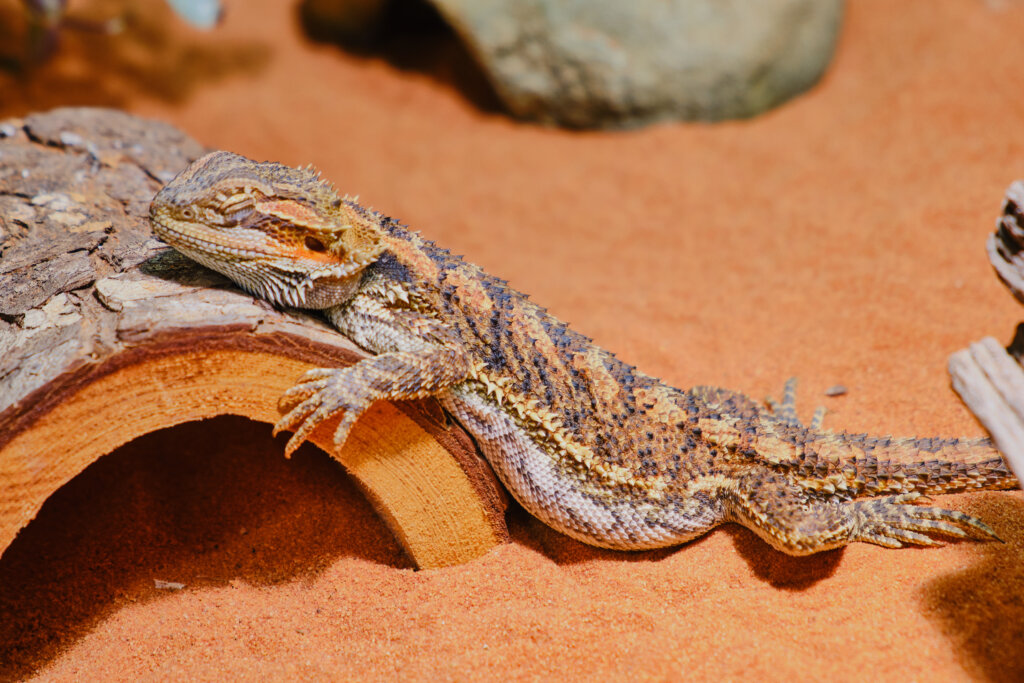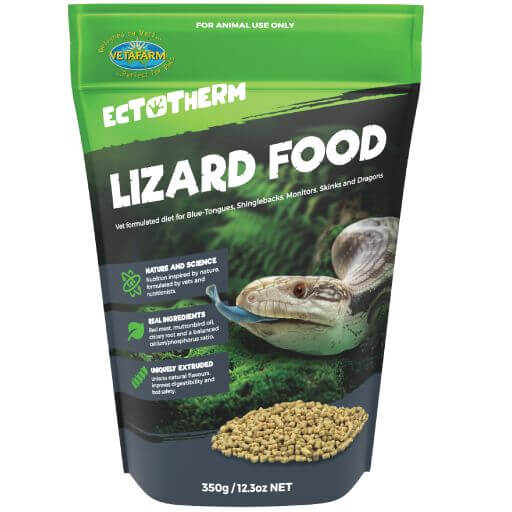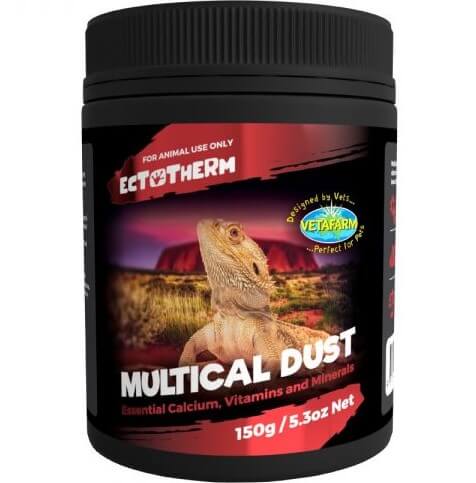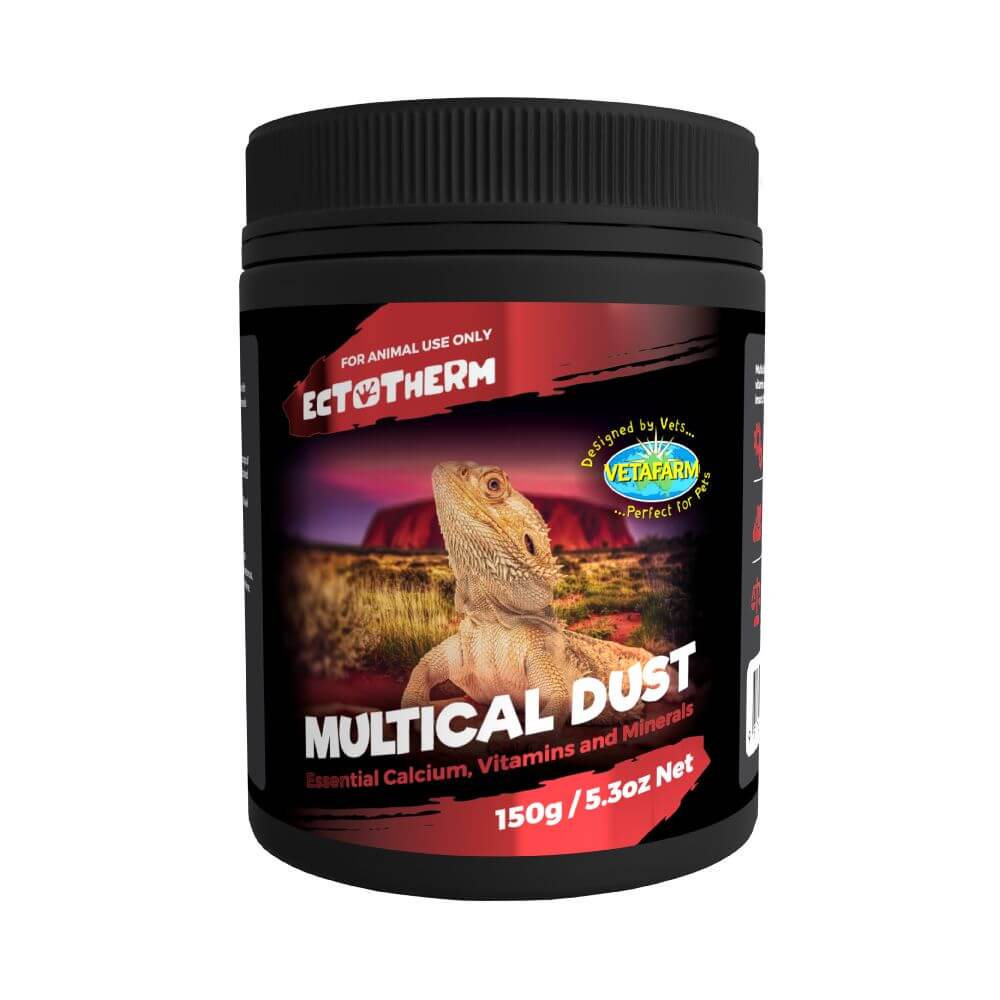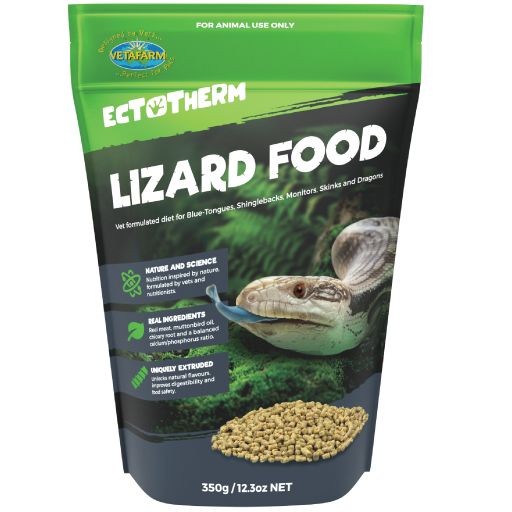Bearded Dragon Basics – Have you ever considered owning a dragon as a pet?
– Ben Dessen. Reptile Department Manager, Kellyville Pets.
Fast Facts
Lifespan: 10-15 years.
Adult size: 40-60cm
Enclosure size: 90 x 45 x 60cm (minimum).
Diet: Live insects, fruits, vegetables & Vetafarm Lizard Food.
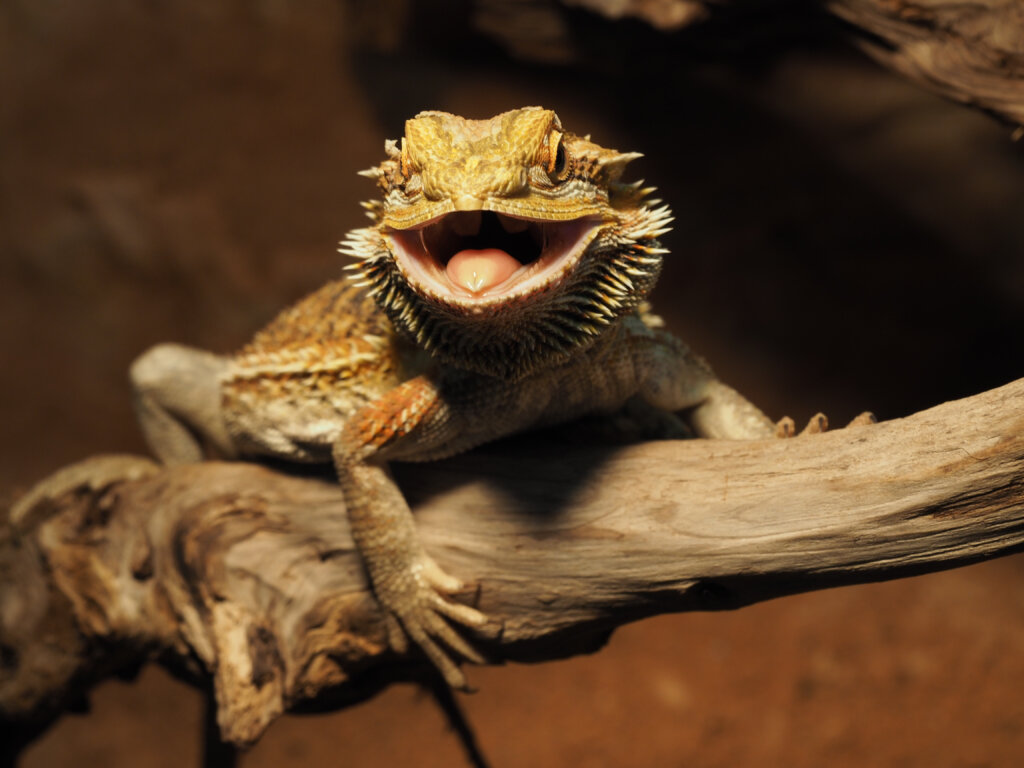
Known for its amiable nature and distinctive spiky appearance, the bearded dragon is friendly, remarkably easygoing and reacts positively to gentle handling. This makes them a rising favourite as a pet. But, before diving in and bringing one into your home, it’s crucial to grasp the specific care needs of this pet lizard dragon and determine if they genuinely align with what you’re looking for in a pet.
Equipment and maintenance
Providing adequate temperature gradients within a dragon’s enclosure is essential for maintaining their health and well-being. Bearded dragons require a hot basking spot maintained between 35-40˚C. They should have access to an elevated piece of timber or a rock ornament to allow them to bask within 30cm of the heat source. The cool end of the enclosure should be maintained between 24-26˚C and should not drop below 18-21˚C at night.
Temperatures should be checked daily and must be regulated with the use of a good-quality thermostat. Recommended heat sources include incandescent, halogen, ceramic (nighttime), mercury vapour globes, and a heat mat as a secondary heating source.
Ultraviolet light (UV) plays an important role in a dragon’s growth and development. A 10.0 UVB tube or compact globe must be used as a source of artificial UV lighting in the dragon’s enclosure. Dragons should also have access to unfiltered, natural light at least once or twice a week. Maintaining a ‘day and night’ cycle with heat and UV lights set on a timer that runs for approximately 10-12 hours each day is also required.
Enclosure
Fresh water should always be available to the dragon and changed daily. Young hatchlings also enjoy a very light misting of water on hot days in summer and often drink droplets of water off ornaments in the enclosure.
Bearded dragons are active, sun-loving reptiles that spend considerable time basking each day. Dragons are solitary animals and should generally be housed on their own to avoid dominance and aggression issues between dragons.
A glass or timber enclosure of at least 90x45x60cm for one adult dragon is recommended. However, a 120x45x60cm enclosure is ideal. It is important that the enclosure has sufficient ventilation as well as a secure, lockable door.
The enclosure can be furnished with basking logs, rocks, a sturdy background, artificial plants and a water and feed dish. An absorbent substrate, such as a fine-grade reptile-safe desert sand or artificial grass repti-mat, is also important for good hygiene. Or test your skills with a bioactive set-up!
Cleaning & Hygiene
Maintaining high standards of cleanliness and hygiene within the dragon’s enclosure is important. Daily ‘spot checks’ should be done, such as sifting substrate to remove faeces, shed skin, or uneaten food. A full substrate change should be carried out every 2-3 months (depending on what substrate is used), and the enclosure should be thoroughly cleaned with a reptile-safe disinfectant such as Vetafarm’s Enclosure Clean.
Nutrition
Bearded dragons are omnivores and feed on a range of live insects and plant matter. Bearded dragons should be fed a variety of live foods and fruits and vegetables in captivity. Hatchling and juvenile dragons will consume more live food than vegetables (80:20) with sub-adult and adult dragons consuming more fruits and vegetables (50:50).
Live foods suitable for bearded dragons include crickets, woodies, black soldier fly larvae, mealworms (in moderation) and silkworms. All live foods should be dusted with Vetafarm’s Multical Dust before being offered. As a guide, the size of live insects should be no larger than the space between the lizard’s eyes. Fruits and vegetables that can be offered include kale, endive, parsley, Asian greens, apples, carrots, beans, broccoli, zucchini and squash. Commercially available lizard pellets such as Vetafarm Lizard Food can also be mixed with chopped fruits and vegetables to provide extra nutrition for the dragon. Juvenile dragons should be fed daily (live food twice daily for very young hatchlings), and adults should be offered food every second day.

